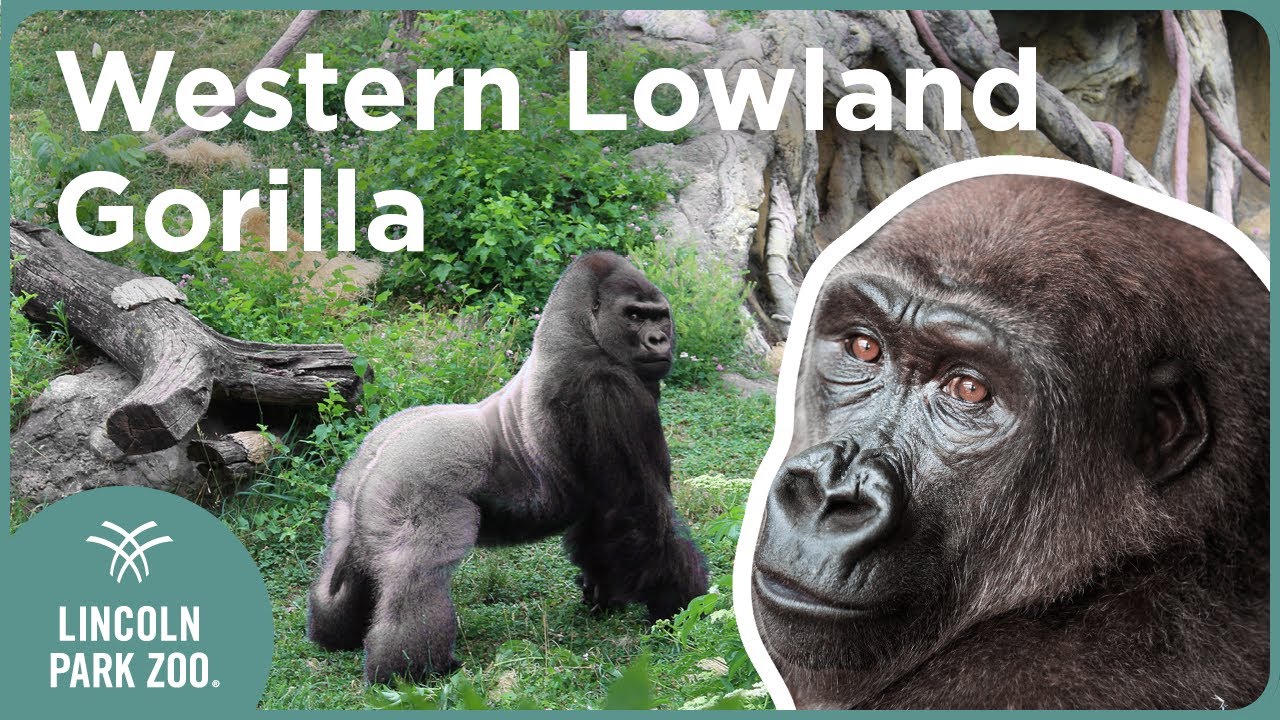– Discovering the intricacies of Western lowland gorilla behavior
– Understanding the conservation status of Western lowland gorillas and efforts to protect them
– Exploring the habitat and dietary preferences of Western lowland gorillas
– Recognizing the importance of Western lowland gorillas in ecosystem balance
Western lowland gorillas, distinguishable through their dense, greyish-brown coats and more pronounced brow ridges compared to their mountain cousins, offer a fascinating subject for study. These primates, inhabiting the dense rainforests and swampy areas of Central Africa, have piqued the interest of zoologists and wildlife conservationists worldwide due to their complex behaviors, social structures, and, unfortunately, their precarious existence amid escalating threats.
**Discovering the Intricacies of Western Lowland Gorilla Behavior**
One of the most remarkable aspects of Western lowland gorillas is their social structure. Typically, a troop is led by a dominant male, known affectionally as a “silverback” due to the characteristic silver streak that appears on their back upon reaching maturity. This silverback makes most of the decisions, from foraging paths to mediating conflicts within the group. The role of a silverback in maintaining the troop’s cohesion and protection underscores these animals’ complex emotional and intellectual capacities. Observations of their behavior, such as using tools to access food or sophisticated communication through vocalizations and gestures, further underscore the cognitive prowess of Western lowland gorillas.
**Understanding the Conservation Status of Western Lowland Gorillas and Efforts to Protect Them**
The IUCN Red List categorizes Western lowland gorillas as Critically Endangered due largely to habitat destruction, poaching, and disease – notably the Ebola virus, which has decimated their populations. Conservation efforts focus on habitat protection, anti-poaching measures, and public education to reduce bushmeat trade. Sanctuaries and rehabilitative programs tirelessly care for orphaned and injured gorillas, aiming to reintroduce them into the wild whenever possible. Continued research and monitoring are pivotal in crafting strategies that address immediate threats and long-term ecological viability for Western lowland gorillas.
**Exploring the Habitat and Dietary Preferences of Western Lowland Gorillas**
Adapted perfectly to their environment, Western lowland gorillas are found in the dense, tropical rainforests that span several Central African countries. The lush vegetation provides a continuous source of food and concealment from threats. A gorilla’s diet is predominantly herbivorous, consisting of leaves, shoots, roots, and fruit, supplemented occasionally with insects. This dietary preference plays a fundamental role in the ecosystem by facilitating seed dispersal and ensuring healthy forest regeneration, highlighting the ecological importance of Western lowland gorillas. Their ability to modify the forest landscape marks them as key species in maintaining biodiversity and forest health.
**Recognizing the Importance of Western Lowland Gorillas in Ecosystem Balance**
The role of Western lowland gorillas extends beyond forest architecture; they are pivotal in maintaining the dynamic equilibrium of their habitat. By controlling the population of certain plants and facilitating seed dispersal, they contribute significantly to the structural and species diversity of the forest. This, in turn, supports a wider range of life forms, demonstrating the interconnectedness of the ecosystem. Their decline impacts not just the species but also the health of the entire forest ecosystem, affecting countless other species reliant on this biodiversity hub for survival.
This dive into Western lowland gorillas underscores their awe-inspiring presence in nature and emphasizes the critical need for concerted conservation efforts. Protecting these magnificent creatures is not just about preserving a single species but about ensuring the health and longevity of Central Africa’s lush rainforests and the myriad of life they support. The insights into their behavior, diet, and habitat offer a compelling reminder of our shared responsibility to safeguard our planet’s biodiversity for generations to come. Through continued research, conservation action, and public education, there is hope for the Western lowland gorilla, reflecting the broader ambition of wildlife conservation to maintain the delicate balance of our natural world.
*****
Source Description
Western lowland gorillas are one of the largest living primates. Check out these interesting facts about gorillas and impress your friends with your animal knowledge!
0:05 How big are western lowland gorillas?
0:22 Who makes up a troop?
0:40 How do silverbacks protect their troops?

